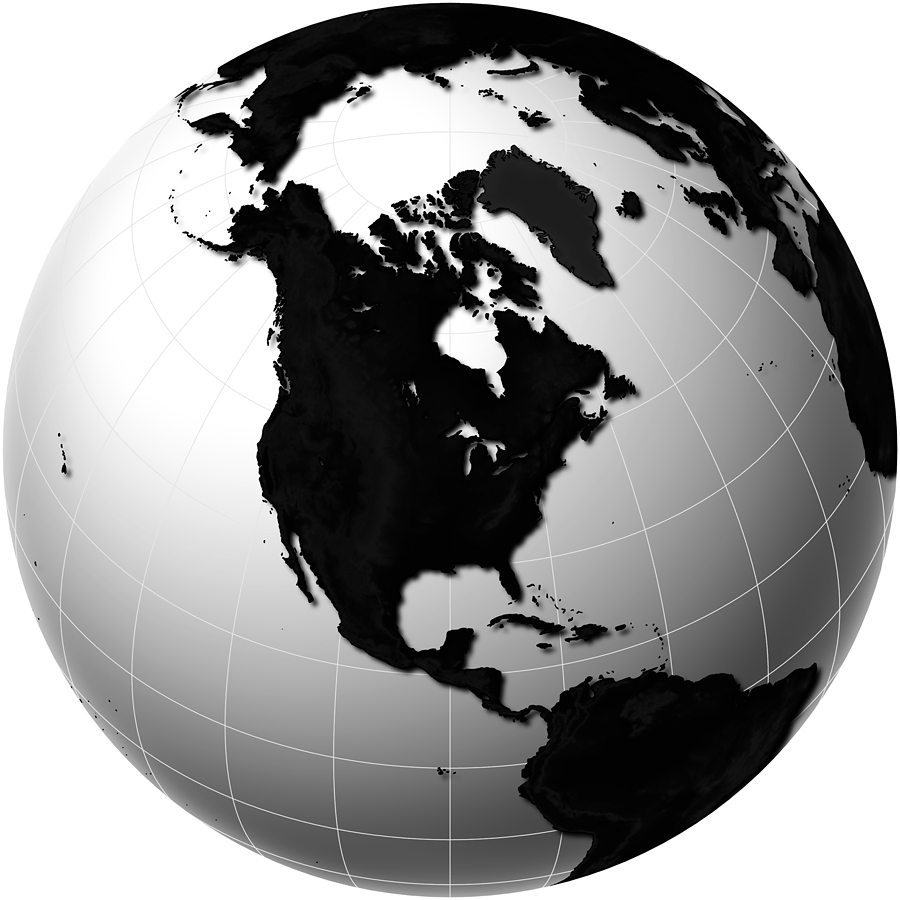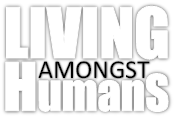 I study humans as a matter of survival. I need to understand how humans work, because I live in a world full of them. I notice things about them that they don’t recognize themselves. For example, humans define boundaries. It’s how they make sense of the world, how they organize it, how they pigeonhole all of its myriad bits.
I study humans as a matter of survival. I need to understand how humans work, because I live in a world full of them. I notice things about them that they don’t recognize themselves. For example, humans define boundaries. It’s how they make sense of the world, how they organize it, how they pigeonhole all of its myriad bits.
A boundary surrounds a concept. What’s included is different in kind from everything beyond it. Without boundaries, the universe would be an indistinct blur, lacking mental handholds. Boundaries are clumsy organizational tools, though. They are seldom as well-defined as you might assume. The closer you look at the boundary, the more difficult it is to fix. As essential as boundaries are, they tend to be imprecise.
Consider the concept of North America. Anyone (I hope) can look at a map of the world and instantly point to that continent. When I start asking questions, though, the concept of North America, and the borders that define it, becomes murky. For example:
Is Mexico in North America? My map says it is, but my phone plan refers to rates for North America, defined as Canada and The United States of America. Some phone plans include (some) Caribbean islands in North America. Puerto Rico and the U.S. Virgin Islands make some sense, as they are part of The United States of America (which is part of North America). But wait—Hawaii is certainly part of The United States. Is Hawaii part of North America? Is Guam?
According to my map North America stops at Mexico. What about the countries in Central America? Geographically, they are a continuation of Mexico. The landmass continues to narrow southward. The abrupt transition to South America seems clear. But where does North America stop? Is Central America part of North America after all? Since it’s connected to the continent, it’s more so than Puerto Rico. Or Greenland.
And what about Greenland? The atlas includes Greenland in North America. At first glance, that seems reasonable. Greenland is a continuation of the collection of islands to the north of Canada—the largest. If off-shore islands are grouped with continents, it makes sense to include Greenland in North America. And yet Greenland is strongly associated with Denmark, a European country.
Continents are one thing, but how difficult is it to define the boundary of the human body? Where is the border of me? What’s in and what’s out? Surely this boundary is easier to define than that of North America. After all, I’m self-contained. My body is what moves around when I do. It’s that mass of flesh and tissue that gets wet when I take a shower, including all the bits inside. However, just as in a continent, the pat divisions—what’s part of my body and what’s not—start to break down when I look closely.
A multitude of mites and microbes crawl over my skin. It’s unsettling but true. It only takes a microscope to prove it. Tiny mites crawl about eating my dead skin. Mites inhabit my hair follicles. Hordes of bacteria swarm over every square inch. Are they part of me? They move where I move. Most of them, no doubt, remain with me after a shower.
There are bacteria throughout my body, inside and out, but especially in my gut. There are about ten times more bacteria in my body than human cells—another unsettling thought. Some of these bacteria are beneficial and would be hard to live without. Are they part of me also? They are within my body, and yet distinct from what I think of as me.
So far, I’ve focused inwards, but how far out do I extend? My fingernails are a component of my body. When I clip them do the parings stop being part of me? That seems wrong. They are part of me—just a part no longer connected to my body.
One late spring day in 1997, I was standing on a ladder, pruning a rhododendron in my front yard and I (clumsily) snipped off the tip of my finger. To me, that’s close to clipping my fingernail—even if considerably more painful. The fingertip and the fingernail paring came from almost the same location on my body. There were differences, of course. The fingernail paring and fingertip were different types of cells. Also, the nail paring was intentionally removed from my body and the fingertip was not. Yet they were both little bits of my body, clipped off and detached.
But wait! I took that fingertip to the emergency room where a physician sewed it back onto my finger. It’s still part of me to this day. I’ve used it a number of times to type this paragraph, in fact. To me, that’s pretty convincing proof that a part of me can be isolated from my body and still be me.
The fingernail is “dead” whereas my fingertip contains “live” cells. That’s not what determines what is me and what is not. Besides my fingernails, the entire outer layer of my skin and all of my hair, not to mention the lenses in my eyes, are “dead.” Can you see how these boundaries get tricky?
If I had a child (I cannot, but suppose I could), it would be formed of part of me at least as much as my fingertip or fingernail paring is. All of the DNA from my sperm cell would be in every cell of that child. At least half of me extends to my offspring, in a very physical, literal sense. Where’s the boundary between me and my (hypothetical) child?
I can extend this argument beyond the soulless biochemistry of DNA. There’s more to a person than just trillions of cells. There are emotions, thoughts, beliefs, and behaviors. And yet, I’m sure that I would contribute a large percentage of those to a child. A child contains parts of the parent—is an extension of the parent—not metaphorically, not in any abstract sense, but quite literally, and in many ways.
One of the most fundamental boundaries humans identify is that between living and non-living. Nearly all of us prefer to be on the living side of that boundary. It’s a well-understood distinction, at first glance at least, and most people can easily discriminate between human life and non-life. Bodies of law, religious doctrine and some of the greatest moral debates are built upon the ability to define this dissimilarity. But, as with most boundaries, the distinction, the point of transition, becomes more difficult to assess the closer I look.
When did I come into existence? When did I start to live? In a sense, the person that I consider to be me didn’t exist before my mid-twenties. There have been many mes throughout my life. When does life begin? Most people have a pat answer to that question (conception, birth, etc.). To me it’s unresolved.
Did my life start the moment my unique genetic combination was first assembled through the joining of my parents’ gametes? This point of conception, to me at least, is not the proper transition from non-life to life. It isn’t my specific genetic code that defines me. If I had a tumor, it would be somewhat genetically altered but still be part of me, much to my dismay.
Did my life start when I was born, when I first sucked air? I wouldn’t be significantly more alive than I was minutes before, as I struggled through the birth canal. Was that first breath more momentous than the dozens of firsts I would confront that birth day, or the thousands of firsts in my initial year? I don’t think so. And yet, when I contemplate this, when I try to fix my beginning, I’m lost. There is no instant that satisfies me. And I believe I know why.
I view life as a continuous procession from parent to child, to the child’s child, and so on. There’s no start at all, other than, perhaps, the first microbe. I’m a direct descendant of that microbe and the lineage can be tracked, at least in theory, over eons. Genetically, I’m the sum of parts of my parents, as they are of theirs. I existed in them, in some form, long before my birth. The pieces that eventually were to become me were part of a living being. If it sounds absurd to call me alive within the sex organs of my predecessors, it’s as much convention and artificially imposed boundaries as any true distinction. This view of life, as an uninterrupted strand through the ages, is far from the only legitimate perspective. It has as much weight, though, as any other.
I see life as a continuous chain from its first appearance on Earth, through me. It’s a thread that connects me back through billions of years. Thus, it’s remarkable that this chain will end. I might not be able to predict the exact moment, but I know it will happen. I, childless, am a terminus. I will be the one who, after eons, breaks the link. How fascinating! There’s also a graceful, breathtaking sadness to that thought.
I could view this situation, morosely, as some final failure. I could also look at it, with hubris, as if I’m the final creation, a construction billions of years in the making. Thankfully, I don’t. Nevertheless, it’s astounding to contemplate. Events that have played out over geologic time have resulted, finally, in me. It would be a shame to waste four billion years without recounting this tale. Nobody else has, in all those endless years. I must honor the creatures and humans, ancestors all, who preceded me. I have a story to tell. And so I shall.

This makes me smile…. your life as a “terminus”. My ASD son has given me long lectures about the over-population of the planet, so he’d like this idea… a lot. I’ve found that boundaries are the hardest thing to grasp as an aspie woman. Boundaries, or the lack of understanding of them, have gotten me into trouble on many occasions. I see everything as being connected and feel the world through this concept. This can often overload my senses, but I’d rather have that to deal with, than to be and feel separate.
Hi Jenny. Your comment made me, in turn, smile. After years in existence, and a year of being available on this site, you are the very first to comment on the very first piece — other than my almost completely overlooked and under-appreciated copyright notice — I published here. Congratulations!
If you feel that everything is connected, then you are aligned with the spirit of what I am saying here. Boundaries are necessarily crude and often — as you point out — get us into trouble.